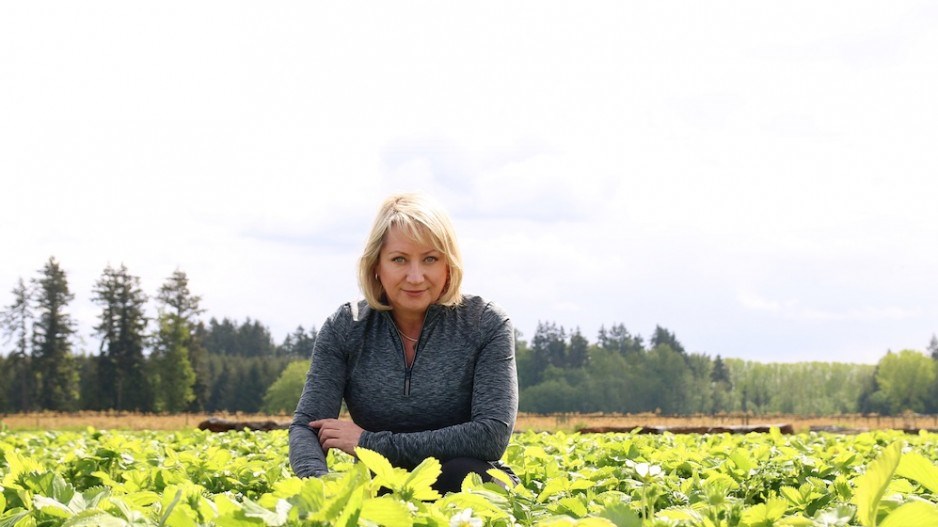Data from the 2021 Census of Agriculture shows more farmers are getting richer and bigger.
More recent Statistics Canada data also show that farm incomes have increased dramatically since the start of the global pandemic two years ago.
Farms with $1 million or more revenues increased by almost one-quarter to 9.9 per cent of farmers from 7.2 per cent in the 2016 census.
Of those farms with $1 million revenue, just over half had revenues of $2 million plus compared with 40 per cent five years ago.
Statistics Canada reported May 25 that the country's farmers' profits jumped 46.4 per cent in 2021 from a year earlier after rising 79.7 per cent in 2020, compared to 2019.
The country's number cruncher called the profit "realized net income," and defined it as the difference between farmers' cash receipts and operating expenses, minus depreciation, plus income in kind.
Pre-pandemic, in 2019, farmer profit increased just 5.1 per cent over the prior year.
The average value of Statistics Canada's Farm Product Price Index rose 20.3 per cent in 2021, compared with 2020. That was the largest average growth in nearly 50 years. In contrast, the average value of Statistics Canada's Consumer Price Index rose 3.4 per cent over the same period.
The 2021 census shows the number of farms declined by 1.9 per cent to 189,974, slowing a trend that has been in place for decades
Average farm size increased slightly to 820 acres from 809 but that figure is skewed by inclusion in this census by a change in the definition of farms.
Saskatchewan had the highest realized net income in 2021, according to Statistics Canada. It was followed by Alberta, Ontario, Manitoba and Quebec. Those provinces generate high volumes of crop and were able to capitalize on high crop prices.
The total value of farm capital in Canada increased 35 per cent to $690.8 billion with value of land and buildings up 70 per cent to $603.8 billion. Value of livestock fell 17 per cent to $22.65 billion, according to the 2021 Census of Agriculture.
Over the five years farm revenues increased 25 per cent to $87.02 billion. Average revenue per farm was around $479,000 compared with $327,000 five years previous.
Average gross profit per farm was $83,000 in 2021, compared with $31,000 in 2016.
Expenses averaged 83 cents for every dollar of revenue with grain and oilseeds at 76 cents having the lowest expenses. Highest was sheep and goats at 97 cents.
Female farm operator numbers increased 30 per cent to just under 80,000 but average farmer age was up four months to 41.6 years. The proportion of farmers aged 55 or over increased 6.6 per cent to 60.5 per cent.
Cattle herd numbers increased to 12.6 million from 12.3 million. Hog numbers increased 3.4 per cent to 14.6 million.
The development of the cannabis industry was reflected in the 23.2 per cent increase in greenhouse space to 330.5 million square feet.
The number of farm operators working off-farm increased by almost four per cent to 125,280 — equalling two-thirds of all farmers.
Grain and oilseed farms were 34.3 per cent of farms with beef and feedlot farms at 20.9 per cent.
B.C. farmers say that they are seeing profits crimped from soaring costs for fertilizer, fuel and labour.
Richberry Farms owner and Ocean Spray chair Peter Dhillon said not only are fertilizer prices soaring, but the products are often not available.
"We were uncertain whether we could get fertilizer this year, so we bought, I think, a third of our needs, and we've stored that," he said. "We're hoping that two thirds of our needs will be supplied."
Labour costs are also rising, according to Driediger Farms owner Rhonda Driediger.
Minimum wages in B.C. are set to rise nearly 3 per cent, to $15.65 per hour, on June 1. Driediger said she pays transportation costs to get 36 temporary foreign workers to Canada from Mexico, and then pays them at least minimum wage.



